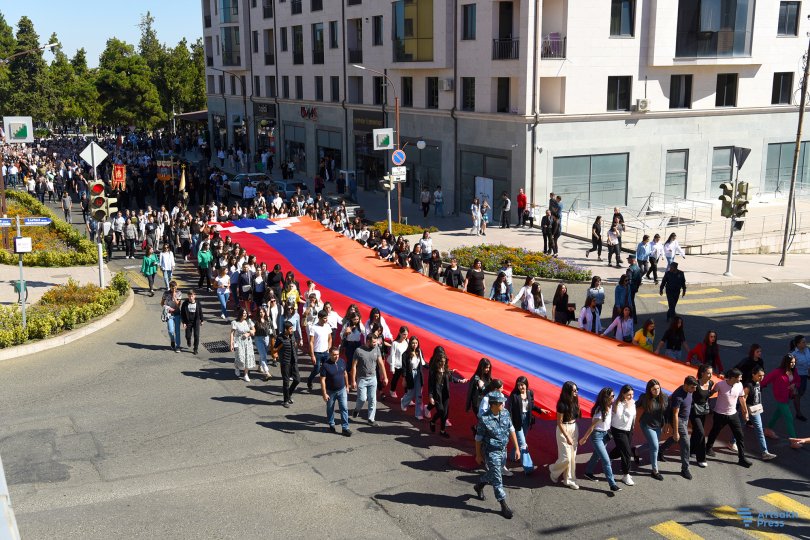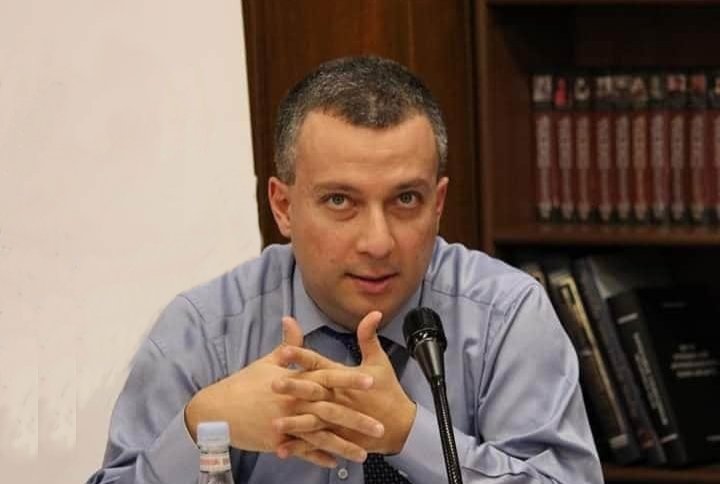
September 27, 2022, marks the second anniversary of the 2020 Nagorno Karabakh war. The war significantly altered the geopolitics of the South Caucasus and the balance of power between Armenia and Azerbaijan. The staggering defeat of Armenia resulted in Azerbaijan’s takeover of not only the territories around Nagorno Karabakh but also 30-percent of Karabakh itself. Armenia effectively lost its role as a security guarantor for Nagorno Karabakh Armenians, ceding this role to the Russian peacekeepers who were deployed without any agreed mandate and rules of engagement. As a result of Azerbaijani territorial gains, a hundred communities in the Gegharkunik, Vayots Dzor and Syunik regions of Armenia found themselves in dangerous proximity to Azerbaijani troops. At the same time, many villagers lost any possibility to use borderlands for agricultural purposes.
While some in Armenia hoped that the November 10, 2020, trilateral Armenia-Russia-Azerbaijan statement would open the way for peace, albeit depressing and harsh, securing at least the internationally recognized borders of Armenia, reality proved to be different. Immediately after the signature of the statement, Azerbaijan started disseminating its misinterpretations, insisting that Nagorno Karabakh does not exist anymore and demanding the establishment of the “Zangezur corridor” to reach Nakhichevan via the Syunik province of Armenia. Azerbaijan dismissed all responses from the Armenian side that the statement mentioned only the Lachin corridor and envisaged the deployment of Russian peacekeepers in Nagorno Karabakh, thus explicitly accepting the existence of the region. After a surprising victory in the June 2021 early parliamentary elections of the ruling Civil Contract party, the new Armenian government started to speak about the necessity to launch an era of peace with Azerbaijan, arguing that the Armenian people gave it a mandate for peace.
Despite the consistently aggressive rhetoric of Azerbaijan and military incursions into Armenia in May and November 2021, Armenian leaders continued to push forward “the peace agenda.” In April 2022, the prime minister hinted during a speech to parliament that Armenia might drop its decades-long position that Nagorno Karabakh could not be part of Azerbaijan and instead agree to some autonomy for Karabakh. Prior to that, during his December 2021 and January 2022 press conferences, the Armenian PM stated that Karabakh lost all chances of independence from Azerbaijan before his ascendance to power in April-May 2018. By taking a significant step back on the issue of Karabakh status, the Armenian government probably hoped that Azerbaijan would reciprocate by dropping its claims that there was no Karabakh after November 2020 and would start detailed negotiations about the contours of autonomy.
However, the hopes of appeasement did not materialize. Azerbaijan continued to push forward the same maximalist line – Armenia should sign a peace treaty with no mention of Nagorno Karabakh, and Armenia should either provide the “Zangezur corridor” or should agree to the deployment of Azerbaijani checkpoints along the Lachin corridor.
The Azerbaijani position and continued reliance on coercive diplomacy and military blackmail put the Armenian government in a challenging situation. It was not ready to satisfy all of Azerbaijan’s demands, as it could spark large-scale protests in Armenia and threaten the government’s position. Meanwhile, the government did not take any tangible steps to increase Armenian army capacities and create at least minimal deterrence against Azerbaijan. After an initial hint of readiness for concessions, it would be complicated to embark on a tough position against Azerbaijan. Thus, the Armenian government found itself in a deadlock, as it could not accept all Azerbaijani demands, yet it could not deter continued Azerbaijani military actions aimed at forcing Armenia to implement those same demands.
neither Russia nor the West can prevent new Azerbaijani attacks
The war in Ukraine further complicated the situation around Armenia. Russia found it extremely difficult to push back against Azerbaijan militarily, as it would probably mean a military clash not only with Azerbaijan but also NATO member Turkey. As intense fighting continues in Ukraine, Russia cannot afford to open a second front. The collective West, including the US and the EU, are interested in pushing for the signature of a peace treaty between Armenia and Azerbaijan, as it would allow them to demand the withdrawal of Russian peacekeepers from Azerbaijan after November 2025. They are also against the ethnic cleansing of Armenians living in Nagorno Karabakh. However, they believe that theoretically, the rights and security of Armenians can be guaranteed without any special status for Nagorno Karabakh under some international mechanisms established by the OSCE or UN. All these discussions lack details, but one thing is clear: neither Russia nor the West can prevent new Azerbaijani attacks. They can stop aggression through diplomatic means after 24, 36, or 48 hours. However, they cannot ban Azerbaijan from launching attacks and cannot force Azerbaijan to withdraw its troops from newly-occupied Armenian territories. Armenia faced the implications of this situation on September 13-14, 2022, when various actors played a role in stopping the hostilities but could not push Azerbaijan to withdraw its troops. Thus, two years after the 2020 Karabakh war, Armenia again faces the prospect of new Azerbaijani aggression, and the only force that may prevent it is the Armenian army. The two years of hectic diplomatic activities proved that there could be no peace on pure Azerbaijani terms. The appeasement policy would only deteriorate the Armenian situation and cause more losses and tragedies.



The dismal failure of the Armenian intelligence in assessing the capabilities of drones has led to their great loss of land and life. Better look, as of now, for other surprises in new wars.